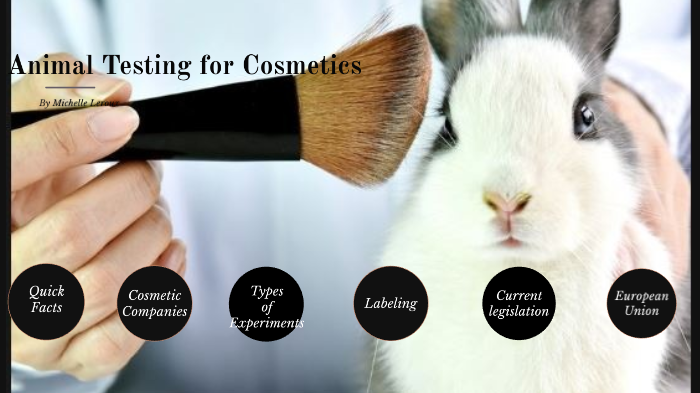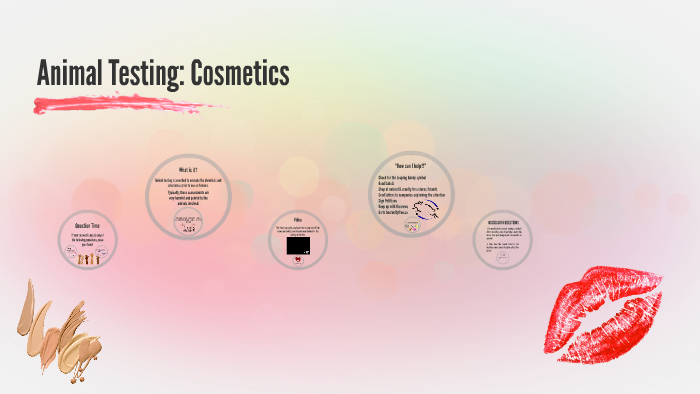The Complex Landscape Of Animal Testing In The Cosmetics Industry: A Comprehensive Overview
The Complex Landscape of Animal Testing in the Cosmetics Industry: A Comprehensive Overview
Related Articles: The Complex Landscape of Animal Testing in the Cosmetics Industry: A Comprehensive Overview
Introduction
With enthusiasm, let’s navigate through the intriguing topic related to The Complex Landscape of Animal Testing in the Cosmetics Industry: A Comprehensive Overview. Let’s weave interesting information and offer fresh perspectives to the readers.
Table of Content
The Complex Landscape of Animal Testing in the Cosmetics Industry: A Comprehensive Overview

The use of animals in testing cosmetics and personal care products has long been a source of ethical and scientific debate. While the practice has been significantly reduced in many parts of the world, it remains a controversial issue with complex implications for animal welfare, product safety, and consumer choice. This article delves into the historical context, ethical considerations, scientific advancements, and regulatory landscape surrounding animal testing in the cosmetics industry.
Historical Context: The Evolution of Animal Testing in Cosmetics
The use of animals in testing dates back centuries, with early civilizations employing them to assess the safety and efficacy of various substances, including medicinal remedies and cosmetics. The development of modern cosmetics in the 20th century led to a surge in animal testing, as manufacturers sought to ensure the safety of their products before releasing them to the public.
Early animal testing methods were rudimentary and often cruel, involving the application of substances directly to the skin or eyes of animals. However, over time, the industry adopted more sophisticated techniques, including:
- Draize eye irritation test: This test involves applying a substance to the eyes of rabbits to assess its potential for irritation or damage.
- Skin sensitization test: This test involves applying a substance to the skin of animals to assess its potential to cause allergic reactions.
- Lethality tests: These tests involve administering a substance to animals to determine its lethal dose.
These tests, while providing valuable information on product safety, were often criticized for their inherent cruelty and limited relevance to human physiology.
Ethical Considerations: The Debate Over Animal Welfare
The use of animals in testing has been a subject of intense ethical debate. Animal rights advocates argue that all sentient beings deserve to be treated with respect and compassion, and that the use of animals in testing is inherently cruel and exploitative. They point to the suffering inflicted on animals during these tests, including pain, distress, and death.
Proponents of animal testing, on the other hand, argue that it is necessary to ensure the safety of both humans and animals. They contend that animal testing has played a crucial role in developing safe and effective products, and that alternative methods are not yet sufficiently reliable to replace it entirely.
Scientific Advancements: The Rise of Alternatives
In recent decades, significant advancements in scientific research have led to the development of alternative methods for assessing product safety. These methods, often referred to as "in vitro" or "non-animal" methods, use human cells, tissues, or computer models to simulate the effects of substances on the human body.
Some of the key advancements in alternative testing include:
- Human cell cultures: These methods involve growing human cells in a laboratory setting and exposing them to substances to assess their potential toxicity.
- Organ-on-a-chip technology: This technology uses microfluidic devices to create miniature organs that mimic the function of human organs, allowing researchers to study the effects of substances on specific organs.
- Computer modeling: These methods use sophisticated software to simulate the behavior of molecules and predict their potential toxicity.
These alternative methods offer several advantages over traditional animal testing, including:
- Increased accuracy and relevance: Human-based methods are more likely to accurately predict the effects of substances on humans.
- Reduced animal suffering: Alternative methods eliminate the need for animal testing, reducing animal suffering.
- Lower costs: Alternative methods are often less expensive than animal testing.
Regulatory Landscape: A Global Shift Towards Alternatives
The growing awareness of ethical concerns and the development of alternative methods have led to a global shift towards reducing or eliminating animal testing in the cosmetics industry.
- European Union (EU): The EU has banned the sale of cosmetics tested on animals since 2013, and this ban extends to ingredients tested on animals.
- India: India has implemented a phased ban on animal testing for cosmetics, with a complete ban expected in the near future.
- China: While China previously required animal testing for all cosmetics, it has recently introduced a pilot program allowing the use of alternative methods for certain types of cosmetics.
- United States: The United States does not have a nationwide ban on animal testing for cosmetics, but several states have enacted their own restrictions.
Despite this progress, the regulatory landscape remains complex, with varying regulations across different countries and regions. This complexity can pose challenges for companies seeking to market their products globally.
FAQs: Addressing Common Questions
Q: Is animal testing still legal in the cosmetics industry?
A: The legality of animal testing for cosmetics varies depending on the country or region. While some countries have banned animal testing for cosmetics, others still allow it.
Q: Why is animal testing still used?
A: Some proponents argue that animal testing is still necessary to ensure the safety of products, particularly for ingredients that are new or have not been extensively studied. They also contend that alternative methods are not yet fully developed or validated.
Q: What are the alternatives to animal testing?
A: Alternative methods include human cell cultures, organ-on-a-chip technology, and computer modeling. These methods offer a more ethical and often more accurate way to assess product safety.
Q: How can I tell if a cosmetic product was tested on animals?
A: Look for certifications or labels such as "cruelty-free," "vegan," or "Leaping Bunny," which indicate that the product and its ingredients were not tested on animals.
Q: What can I do to support cruelty-free cosmetics?
A: Choose products from companies that are certified cruelty-free, and advocate for policies that promote the use of alternative testing methods.
Tips for Choosing Cruelty-Free Cosmetics
- Look for certifications: Look for certifications such as "cruelty-free," "vegan," or "Leaping Bunny." These certifications indicate that the product and its ingredients were not tested on animals.
- Check company websites: Many companies clearly state their animal testing policies on their websites.
- Read ingredient lists: Some ingredients, such as certain dyes or preservatives, may have been tested on animals in the past.
- Support companies that are actively working to develop and validate alternative methods.
Conclusion: A Path Towards Ethical and Humane Cosmetics
The use of animals in testing cosmetics is a complex and sensitive issue. While significant progress has been made towards reducing animal testing through the development of alternative methods and the implementation of stricter regulations, challenges remain.
Moving forward, it is crucial to continue investing in research and development of alternative methods, promote transparency and accountability in the industry, and educate consumers about the ethical implications of animal testing. By working together, we can create a future where cosmetics are developed and produced in a way that is both safe and humane.

/GettyImages-1316412895-c10088ce59774d329891a246daa68dda.jpg)




:max_bytes(150000):strip_icc()/GettyImages-10031716-cdfc59536c744f7a8906057ce6dd832b.jpg)

Closure
Thus, we hope this article has provided valuable insights into The Complex Landscape of Animal Testing in the Cosmetics Industry: A Comprehensive Overview. We hope you find this article informative and beneficial. See you in our next article!
You may also like
Recent Posts
- The Art Of Persuasion: A Comprehensive Guide To Makeup Product Label Design
- A Comprehensive Look At Mary Kay Cosmetics: Reviews, Insights, And Considerations
- Affordable Skin Care: A Guide To Effective Products Under INR 100
- Navigating The World Of Mary Kay Discounted Products: A Comprehensive Guide
- The Power Of High-Resolution Images: A Guide To Acquiring The Best Visuals For Your Projects
- The Power Of Reviews: Navigating The World Of Makeup Products
- Swiss Beauty Makeup: A Comprehensive Guide To Quality And Affordability
- Embracing Natural Beauty: Makeup Tips And Techniques For Women Over 50
Leave a Reply